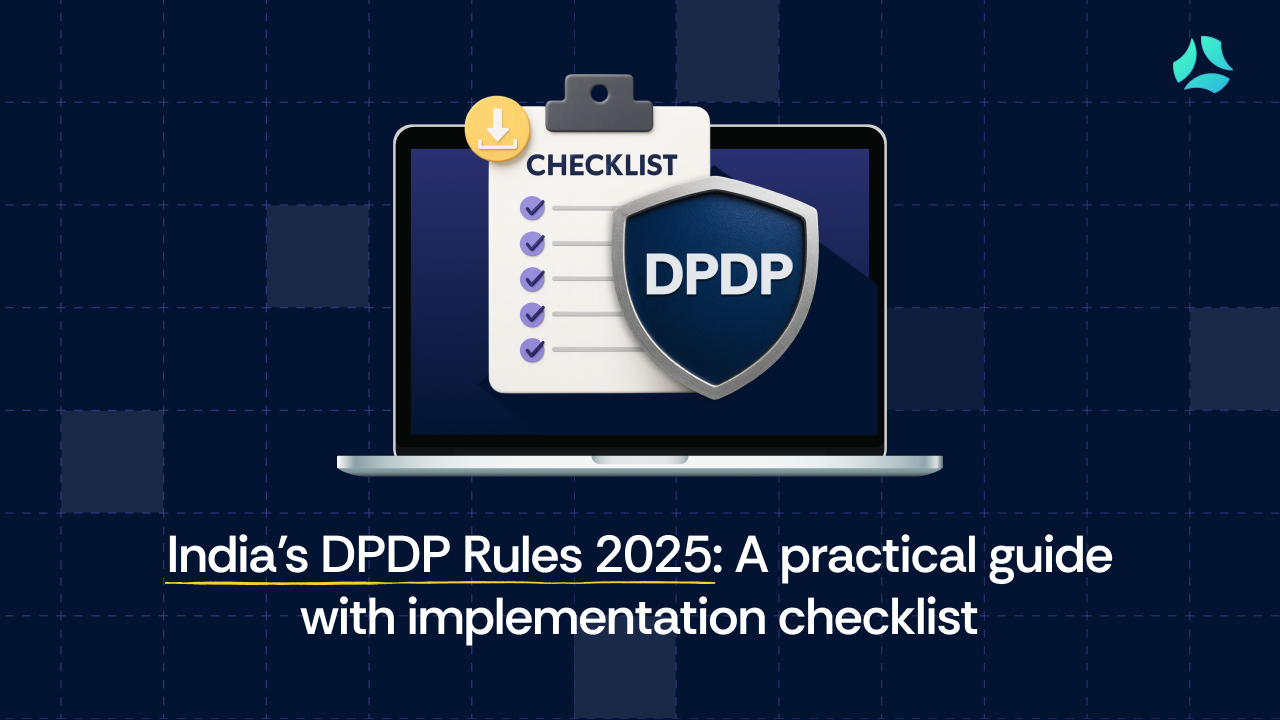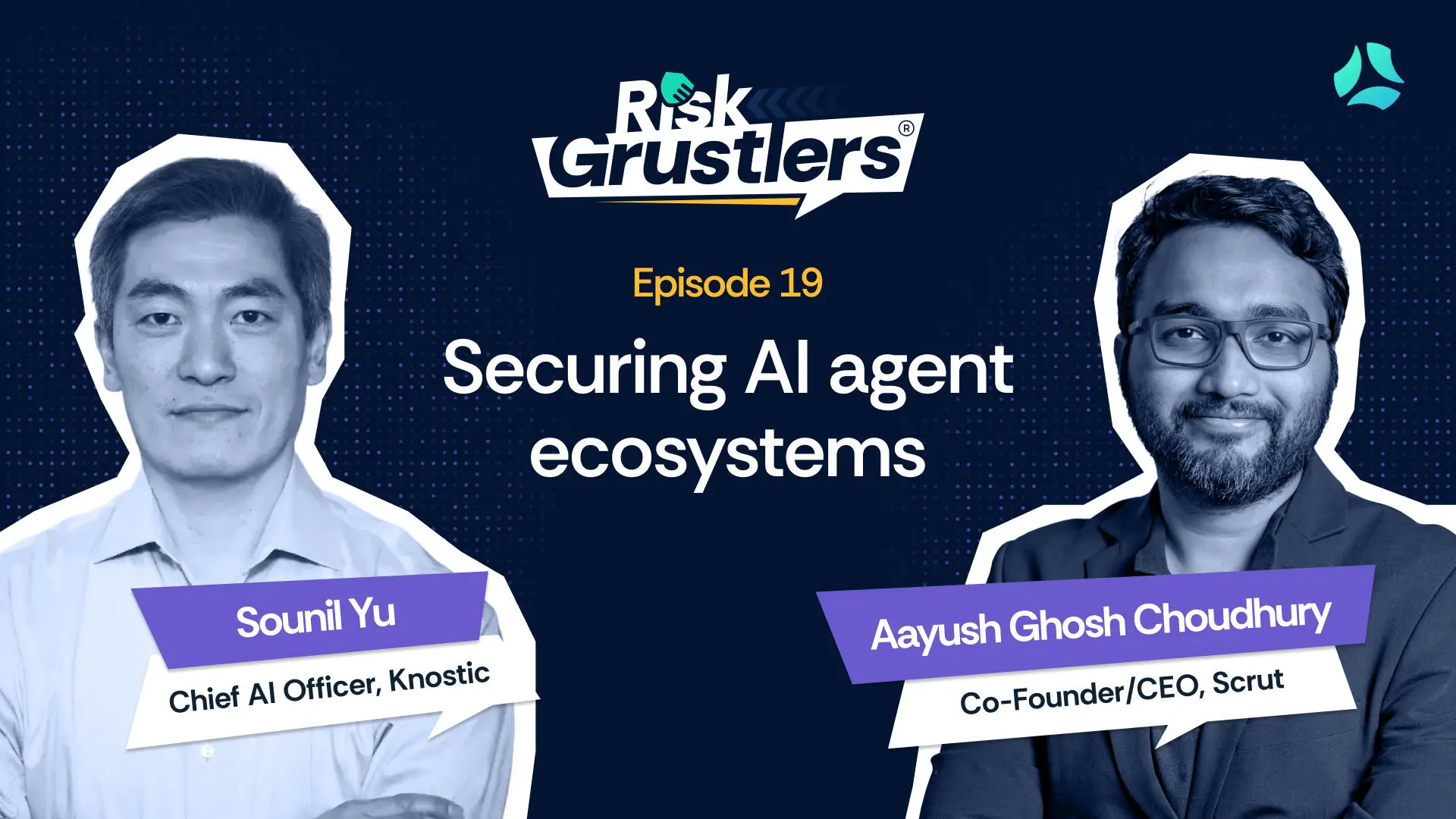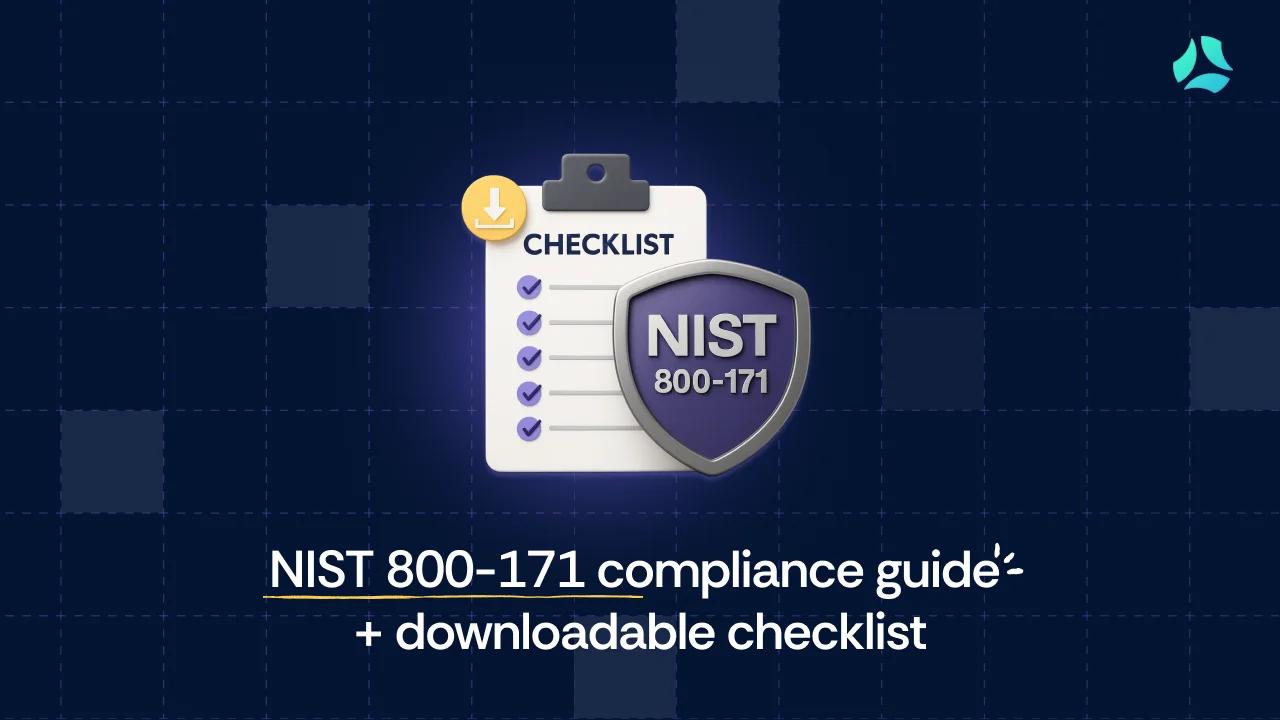Cybersecurity Governance: Meaning, importance, elements, process

Organizations are navigating an increasingly complex and unpredictable cyber threat landscape. To stay secure and compliant, cybersecurity governance serves as a critical foundation for aligning security initiatives with business goals, regulatory obligations, and industry best practices.
An effective cybersecurity governance program defines clear policies, processes, and roles to manage risks, protect sensitive data, and maintain stakeholder confidence. It helps organizations make informed security decisions, prioritize investments, and ensure accountability at every level. Beyond reducing vulnerabilities, strong governance strengthens resilience and keeps the organization prepared for evolving compliance requirements and emerging threats.
What is cybersecurity governance?
Cybersecurity governance is the system of policies, procedures, and oversight mechanisms that guide how an organization manages and protects its information assets. It defines the strategic direction for cybersecurity, sets priorities, allocates resources, and ensures accountability. Governance ensures that security initiatives are aligned with business objectives, regulatory requirements, and stakeholder expectations, making cybersecurity a structured and measurable part of the organization.
Cybersecurity governance vs cybersecurity management
Although closely related, governance and management serve different purposes. Cybersecurity governance establishes the strategic framework, policies, and oversight that guide security decisions. Cybersecurity management, on the other hand, focuses on the operational execution of those decisions, such as implementing technical controls and monitoring systems. In simple terms, governance defines what needs to be achieved and why, while management defines how to achieve it.
Why is cybersecurity governance important?
Cybersecurity governance is the foundation that guides an organization’s efforts to stay secure and resilient in an increasingly complex threat landscape. At its core, it establishes the policies and procedures that prevent, detect, and respond to cyberattacks, reducing exposure to malicious activity. It helps ensure that sensitive information is consistently protected, upholding the principles of confidentiality, integrity, and availability. This not only keeps operations reliable but also maintains trust with customers, partners, and investors.
A strong governance framework provides a structured approach to managing risks. By identifying, assessing, and prioritizing threats, organizations can focus their efforts on the most critical areas and allocate resources efficiently. Beyond protecting data and systems, effective governance signals to stakeholders that cybersecurity is taken seriously, strengthening credibility, business relationships, and overall confidence in the organization. It supports compliance with legal and regulatory requirements, minimizing the risk of fines, legal action, and reputational damage.
Key elements of cybersecurity governance

A comprehensive cybersecurity governance program relies on several core elements that provide structure, oversight, and accountability:
- Risk management: Identifying, assessing, and prioritizing cybersecurity risks allows organizations to implement targeted strategies that reduce potential threats and vulnerabilities.
- Policies and procedures: Formalized policies define security expectations, operational controls, and incident response protocols, providing a clear framework for decision-making and accountability.
- Compliance and audit: Regular audits and adherence to legal, regulatory, and industry standards ensure that governance frameworks remain effective, adaptive, and aligned with best practices.
- Leadership and accountability: Executive and board-level commitment ensures cybersecurity is treated as a strategic priority. Clear ownership of roles, resources, and decision-making fosters accountability and embeds security responsibility across all levels of the organization.
- Reporting and communication: Establishing clear channels for reporting cybersecurity performance to executives and the board ensures transparency and accountability
- Continuous monitoring and improvement: Regularly reviewing governance outcomes and adapting strategies to new threats ensures sustained effectiveness.
Stakeholder roles in cybersecurity governance
Cybersecurity governance is a shared responsibility, involving multiple stakeholders. Collaboration among these stakeholders ensures that strategic intent translates into operational action.:
- Board of directors: Provides strategic oversight, approves cybersecurity policies, allocates resources, and ensures alignment with organizational objectives and risk appetite.
- IT department: Implements and manages technical security controls, monitors networks, and provides operational expertise to support governance directives.
- Chief Information Security Officer (CISO): Leads cybersecurity strategy, oversees risk management, ensures compliance, and coordinates communication between executives, IT, and other stakeholders.
- Employees: Every employee contributes by following policies, actively participating in security training, reporting incidents, and maintaining awareness of cybersecurity risks in daily activities.
How to implement strong cybersecurity governance in your organization

Building a strong cybersecurity governance program requires a structured approach that combines strategy, policy, and execution. A well-planned program helps organizations protect their assets, manage risks effectively, and maintain compliance with evolving regulations. Here’s how to approach it:
1. Assess the current state
Begin by evaluating your assets, data flows, and security controls to understand your organization’s risk exposure. Identifying potential weak points early provides a foundation for targeted improvements.
2. Define clear goals and objectives
Set measurable objectives that align with your business priorities. These might include reducing security incidents, achieving regulatory compliance, or enhancing operational resilience. Clear goals make it easier to track progress and demonstrate the value of governance initiatives.
3. Assign roles and responsibilities
Accountability is critical for effective governance. Define ownership for security processes, audits, and incident response, ensuring everyone knows their responsibilities and how they contribute to the organization’s overall security posture.
4. Develop policies and procedures
Document governance policies that reflect your organization’s strategy, regulatory requirements, and risk tolerance. Clear policies provide a framework for decision-making and consistent implementation across the organization.
5. Select and implement security measures
Ensure the implementation of technical controls such as multi-factor authentication (MFA), role-based access control (RBAC), encryption, and firewalls to protect information assets. Governance provides oversight to ensure these measures are applied consistently and appropriately.
6. Verify legal compliance
Ensure all policies, processes, and security measures adhere to relevant laws, regulations, and industry standards. Regular compliance verification demonstrates adherence to legal and regulatory requirements, strengthening stakeholder confidence.
7. Educate and train personnel
Employees play a key role in governance. Conduct regular security awareness programs and simulated exercises, such as phishing tests, to reinforce understanding and compliance.
8. Monitor and conduct regular audits
Continuously review controls, processes, and policies to detect gaps, verify effectiveness, and maintain compliance readiness. Regular audits help organizations stay proactive rather than reactive.
9. Embrace continuous improvement
Cybersecurity governance is not static. Regularly update policies, refine processes, and apply lessons learned from audits and metrics to strengthen governance over time. Track key metrics, such as incident response time, policy compliance rate, and audit findings, to measure governance effectiveness and guide decision-making. A culture of continuous improvement keeps the organization resilient against evolving threats.
10. Tooling and automation
Consider leveraging GRC tools to automate evidence collection, monitor compliance, and support real-time governance visibility.
What are the risks of having poor cybersecurity governance?

1. Cyber breaches and incidents
Even a single lapse in cybersecurity governance can lead to oversight gaps with far-reaching consequences. Without a strong governance structure, organizations leave themselves exposed to attacks, operational disruptions, and legal pitfalls. Understanding the risks of poor governance highlights why investing in structured policies, controls, and oversight is not optional, it’s essential for protecting both your assets and your reputation.
2. Significant financial losses
For example, Yahoo’s 2013–2014 breaches led to a $350 million reduction in its acquisition value, demonstrating how poor breach management and governance lapses can cause significant financial losses.
3. Reputational damage
Publicized security failures can erode customer and partner confidence, impacting long-term business relationships.
4. Legal consequences
Non-compliance with regulations can result in fines, lawsuits, and other legal repercussions.
5. Disruptions to business operations
Security incidents can interrupt services, delay projects, and cause operational inefficiencies.
What are some cybersecurity governance frameworks?
Cybersecurity governance frameworks provide the structure and principles for aligning security strategy with business goals, managing risk, and ensuring accountability. Prominent examples include:
- ISO/IEC 27014: Defines principles and processes for information security governance, focusing on leadership commitment, strategic alignment, and performance evaluation.
- NIST Cybersecurity Framework (CSF): A risk-based framework developed by NIST to help organizations identify, protect, detect, respond to, and recover from cyber threats.
- COBIT 2019: An enterprise IT governance framework that integrates cybersecurity within broader corporate governance and performance management.
- NIST Risk Management Framework (SP 800-37): Guides organizations in integrating security and risk management throughout the system lifecycle.
How Scrut helps simplify cybersecurity governance
Managing cybersecurity governance can be complex and resource-intensive. Scrut helps organizations build a strong governance program by centralizing documentation, automating compliance workflows, and providing real-time visibility into risks and controls.
With Scrut, teams can:
- Map policies and controls across multiple frameworks to streamline processes and improve efficiency.
- Automate evidence collection and audit readiness to reduce manual effort and ensure compliance.
- Monitor compliance status continuously for real-time insight into risks and control effectiveness.
- Free up IT and security teams to focus on strategic initiatives rather than routine administrative tasks.
By simplifying governance processes, Scrut ensures organizations remain proactive, compliant, and prepared to face evolving cyber threats.

FAQs
1. What does NIST say about cybersecurity governance?
NIST emphasizes governance as a key element of cybersecurity risk management. The NIST Cybersecurity Framework (CSF) helps organizations establish governance processes by defining five core functions — Identify, Protect, Detect, Respond, and Recover — to align security efforts with business objectives and manage risks effectively.
2. What is the most important aspect of cybersecurity governance?
The most important aspects are accountability and risk-based decision-making. Together, they ensure that cybersecurity strategies support business goals, resources are used effectively, and roles and responsibilities are clearly defined across the organization.
3. What are the core principles of cybersecurity governance?
Core principles include accountability, transparency, alignment with business objectives, risk-based management, continuous improvement, and compliance with relevant laws and standards. These principles help create a structured, measurable, and resilient security posture.
4. What role does CISA play in cybersecurity governance?
The Cybersecurity and Infrastructure Security Agency (CISA) supports cybersecurity governance by providing national guidance, best practices, and frameworks. It helps organizations strengthen their defenses, protect critical infrastructure, and build resilience against emerging cyber threats.


















